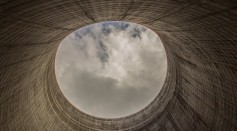nuclear power

Nuclear Reactors Come With Microhardness Three Times More Than Its Components
Germany Plans to Eliminate Coal and Nuclear Power by 2040
US Nuclear Assets Could Be Leaking Radioactive Substances Into The Sea
'Nuclear Power' Found Limitless Via Seawater Uranium Extraction To Supply The World's Renewable Energy
China’s Supercomputer Tianhe-2 Reigns Supreme
Most Popular

How Technology Is Changing the Real Estate Industry?

AI Revolution in Medical Education: Transforming How Healthcare Professionals Learn

Zombie Star Set to Light Up Night Sky: Blaze Star Could Erupt Soon

Exploring Life Beyond Earth: Study Claims Other Planets Could Be Suitable for Alien Life






